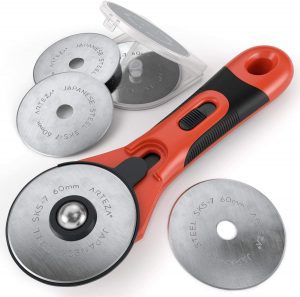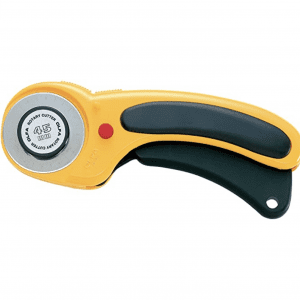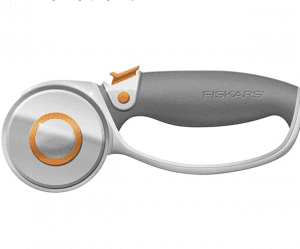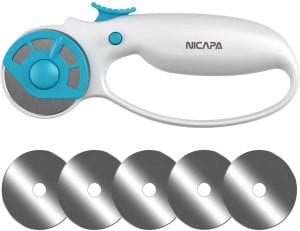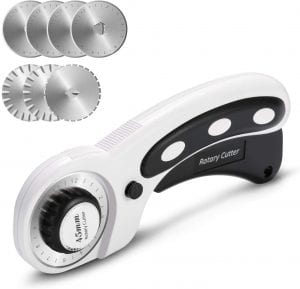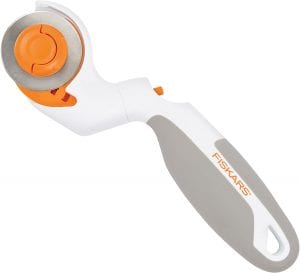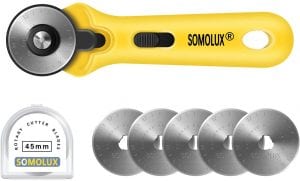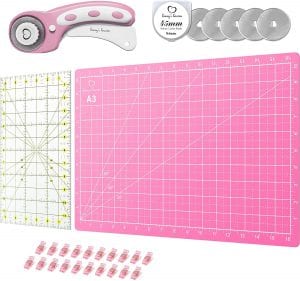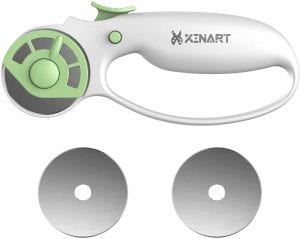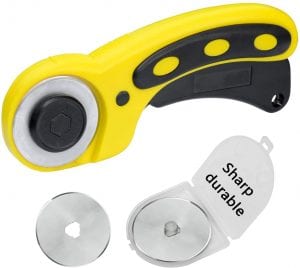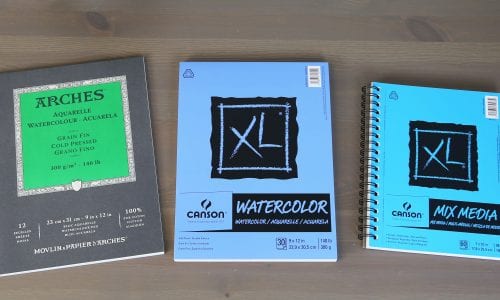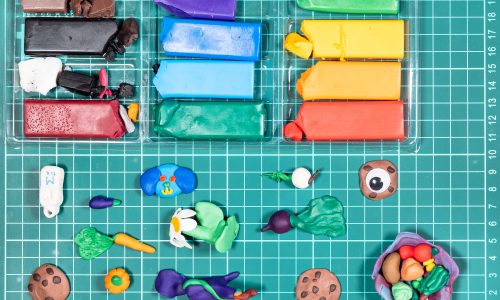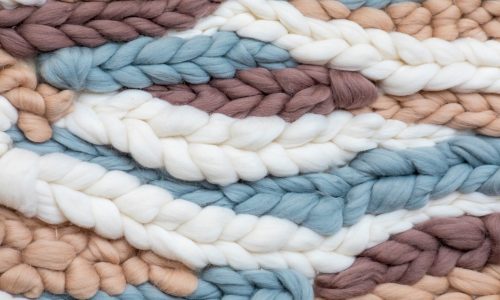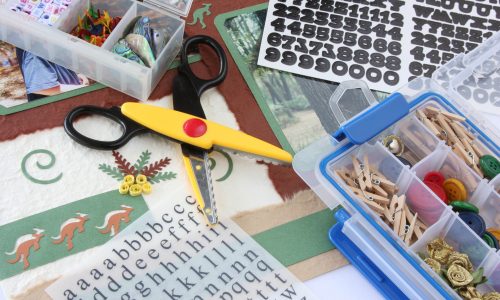The Best Sewing Rotary Cutter
Crafting Must-Haves: Check out these top picks for crafters now on sale at Amazon.
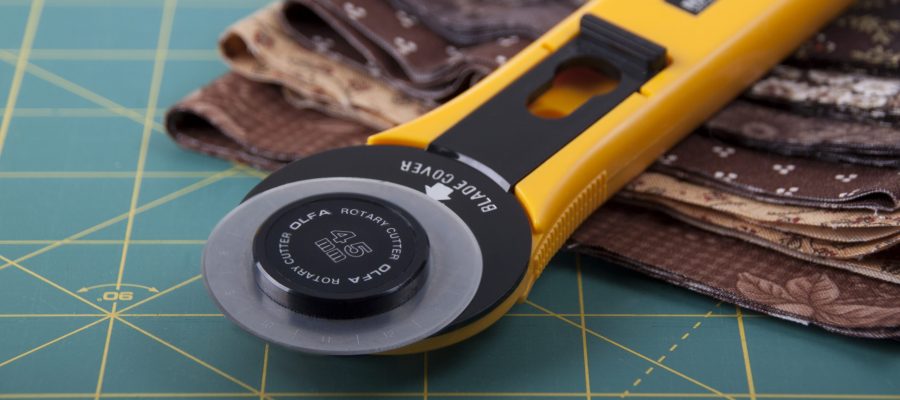
Our Review Process
Don't Waste Your Money is focused on helping you make the best purchasing decision. Our team of experts spends hundreds of hours analyzing, testing, and researching products so you don't have to. Learn more.
Our Picks For The Top Sewing Rotary Cutters
- 1. ARTEZA Ergonomic 60mm Sewing Rotary Cutter
- 2. Olfa 45mm Deluxe Handle Sewing Rotary Cutter
- 3. Fiskars 60mm Titanium Sewing Rotary Cutter
- 4. NICAPA 45mm Ergonomic Sewing Rotary Cutter
- 5. AGPtEK Safety Lock Sewing Rotary Cutter Set
- 6. Fiskars 45mm Pivoting Sewing Rotary Cutter
- 7. SOMOLUX 45mm Sewing Rotary Cutter
- 8. Honey’s Heaven 45mm Sewing Rotary Cutter Set
- 9. Xinart 45mm Safety Lock Sewing Rotary Cutter
- 10. WORKLION Ergonomic 45mm Sewing Rotary Cutter Set
The handle on this sewing rotary cutter is ergonomically designed to be more comfortable to hold. It also has a nice grip, so you won't have to worry about the cutter slipping out of your hands when in use. The Japanese steel blades are also a plus, as they are both durable and rustproof.
Strong SteelWith this sewing rotary cutter, you'll receive complimentary replacement blades.
When working on multiple projects, you'll appreciate this sewing rotary cutter's ergonomic handle. It's designed to be comfortable to hold for long periods of time. The cutter is also ideal for household with small children, as it comes with a safety lock to protect small fingers from the sharp blades.
Dual-Action Safety LockThe blade on this sewing rotary cutter can be swapped out for a pinking, scallop/peak or wave blade if need be.
If you're searching for a durable sewing rotary cutter, this model is your best bet. It's made with a titanium coating that is three times harder than steel. The handle is curved to offer more comfort and there's an included blade lock for added safety.
Economical OptionIndividuals who are not right-handed will appreciate that the blade on this sewing rotary cutter can actually be installed on the opposite side.
This sewing rotary cutter is extremely comfortable to hold, which results in better control and a more precise cut. Each purchase comes with five replacement blades, which allows users to complete a variety of projects. There's also a sliding button on top of the cutter that retracts the blade when not in use for added safety.
Great DesignJoint fatigue is reduced thanks to this sewing rotary cutter's ergonomic design.
Buying Guide
Whether you sew, craft or enjoy finish work, a rotary cutter can become your best tool. A rotary cutter features a circular blade attached to the end of a handle. These tools are used to cut a perfectly straight line without having to lift the material with your other hand. They function best on a solid surface that cannot be scratched or cut open, such as a strong plastic. Rotary cutters are sold in multiple sizes and with countless different features to make your particular job easier. While you think about what your rotary cutter will be used for, let’s do a little more research on the different types of rotary cutters out there.
Rotary cutters have extremely sharp blades that are designed to cut through several layers of fabric or thick material with ease. There are many factors that you want to consider when choosing a rotary cutter to help with your project. The diameter, safety features, material, handle and accessories are all things that come into play when picking out a rotary cutter.
Figuring out the right size of blade is a great place to start. A general guideline to remember is the wider the blade, the thicker material you can cut. The only downside to a larger blade is the lack of ability to cut small, intricate lines. If you are doing detailed work, you’ll want to shop for a smaller blade. The sizes range from 18mm to 60mm. If you are buying for a beginner crafter, a 45mm blade is your best bet.
Next, we can look at the safety features of the rotary blades. One of the best aspects of a rotary cutter is the fact that the blade is entirely covered on one side so it offers built-in safety by default. The blade usually retracts as soon as you stop putting pressure on it, which is another built-in safety mechanism. In addition, you can find rotary cutters that come with blade covers to both protect users and blades when not in use. Of course, you should always keep rotary cutters in a safe place away from children.
Another feature to think about is the material that the manufacturer used to make the blade. Look for a cutter made from tungsten or stainless steel. If you can find a rotary cutter with a good strong blade, you won’t have to replace it as often. Another highly recommended material is carbon steel. Some of the best kitchen knives are made from carbon steel. You’ll know you’ve found a good rotary cutter when they are made with good steel.
Whether you have well-functioning hands or struggle with arthritis, the blade handle on a rotary cutter can make all the difference for your comfort levels. Most rotary cutter handles are ergonomic and fit to the curve of your hand when held. There are also options that are just slightly contoured for those looking for a less form-fitting choice. Some even feature rubber handle grips to prevent any slipping.
Finally, make your money stretch by purchasing a rotary cutter with accessories. It is always smart to bundle your purchase with other tools you’ll need to complete your project in a timely manner. One suggested accessory is a cutting mat to keep your other household surfaces free from scratches. It also helps to have a mat that is non-slip to keep your material in place while cutting. Another fantastic accessory is a ruler track to keep your lines straight and even. And lastly, extra blades are always a must-have. Many of the best rotary cutters come with extra blades.
What to Look For
- Because most rotary cutters are used for quilting or crafting, it makes sense to find one that is recommended by fellow crafters or quilters.
- When looking into accessories, find a ruler mat that is roughly 24×36 inches to accommodate your fabrics. You’ll also want the ruler mat to be clear so you can see the fabric while you cut and ensure that it is not bunching up.
- After using your rotary cutter, it is common to see debris on and around the blade. It is fairly simple to clean the unit. Sometimes it might be a good idea to take the blade off and clean under it as well.
- To cover all the safety bases, invest in a glove for the hand opposite your cutting hand so if a slip occurs, your fingers are protected.
- Remember that a rotary cutter blade usually projects out the top of the handle, so you’ll have to get used to cutting from a different angle than other scissors and tools.
More to Explore
The first rotary cutter was invented by Mr. Yoshio Okada. He founded OLFA, a company that produced many tools for the sewing world. He was inspired (after seeing a tailor struggle with shears to cut silk) by a rotating car tire. It was sold on shelves in 1979 and was quickly adopted by countless other companies, while OLFA continued to evolve the product over the coming years.
The first cutter was a 45mm diameter and since then, OLFA has created three other sizes to accommodate the needs of crafters. The other sizes include 18mm, 28mm and 60mm diameter blades. To further enhance the experience, OLFA offers decorative edge cutters for a patterned look on materials.
As material and fabrics evolved, so did OLFA’s rotary cutters. The tough-to-cut, man-made fabrics challenged the company to design not only a sharper blade but also a more maneuverable unit that would easily cut small pieces without hurting the crafter’s hand.

